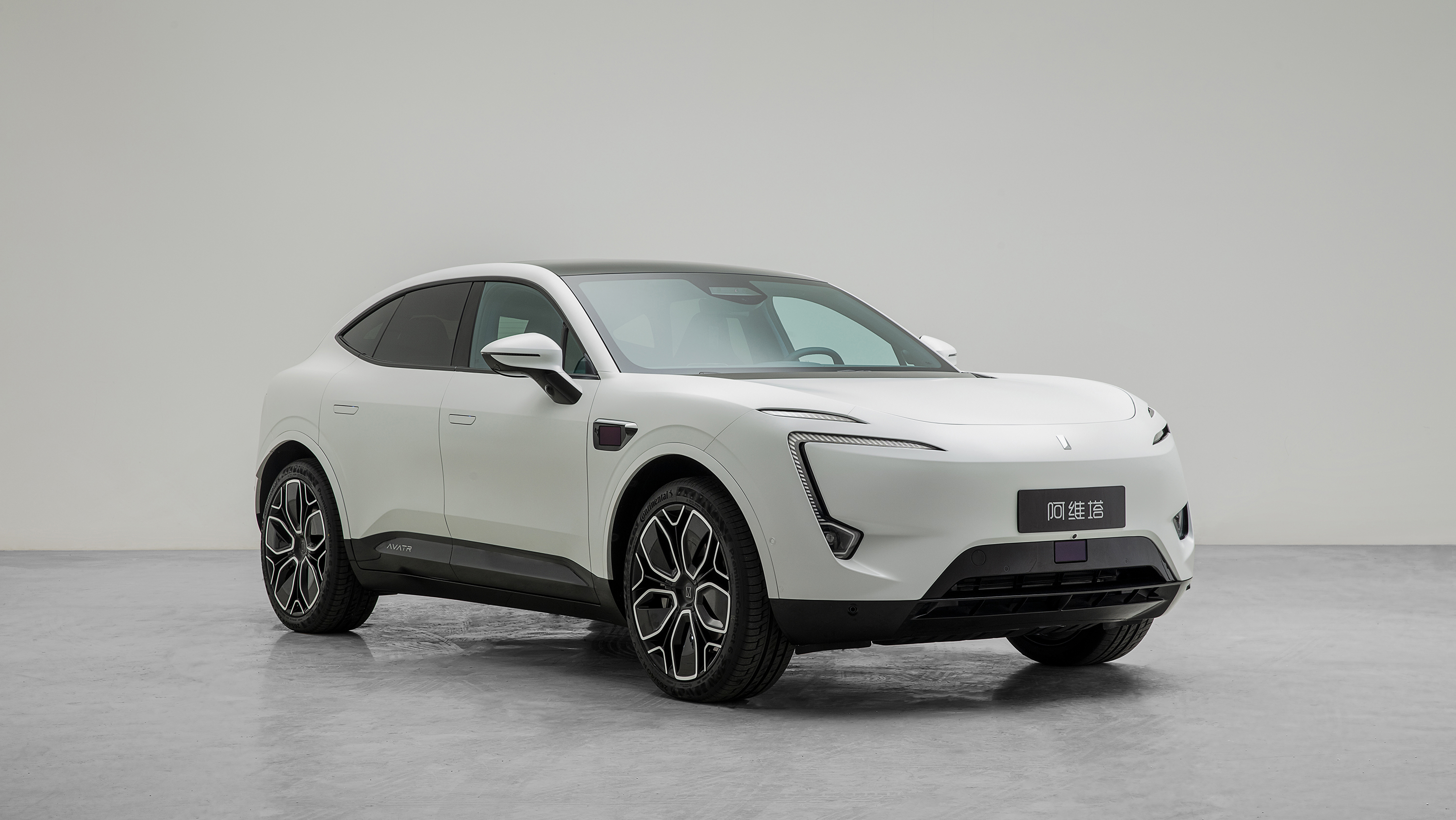Today, Aveta Technology’s first product, the Aveta 11, made its debut in the 354th batch of the “List of Road Motor Vehicle Production Enterprises and Products” published by the Ministry of Industry and Information Technology. It has entered the product announcement stage.
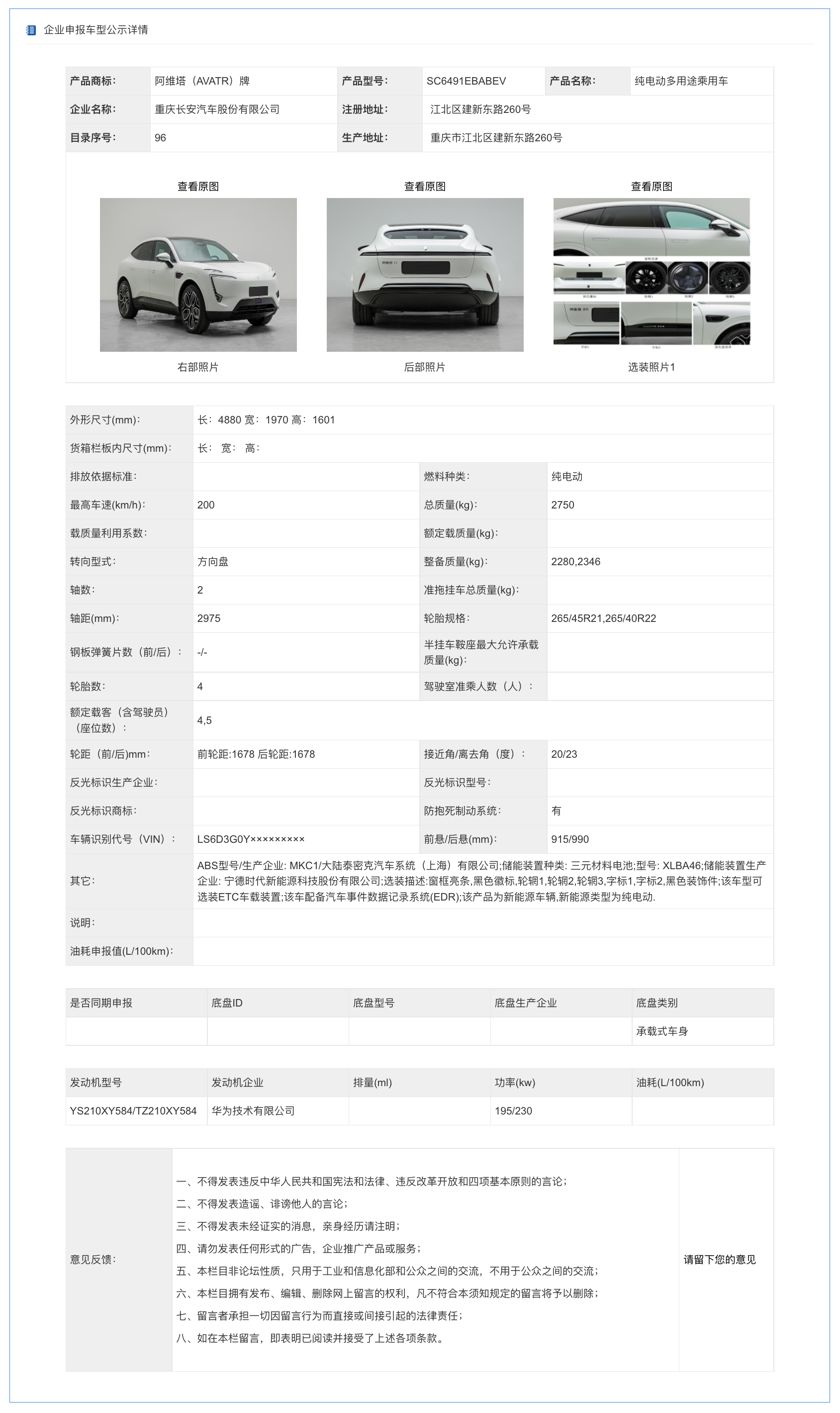
The core parameters in the MIIT document are as follows:
- Length/width/height: 4,880 x 1,970 x 1,601 mm
- Wheelbase: 2,975 mm
- Front motor: 195 kW, rear motor: 230 kW (total output power: 425 kW)
- Acceleration from 0-100 km/h within 3 seconds (i.e. within 4 seconds)
- Curb weight: 2,280-2,346 kg
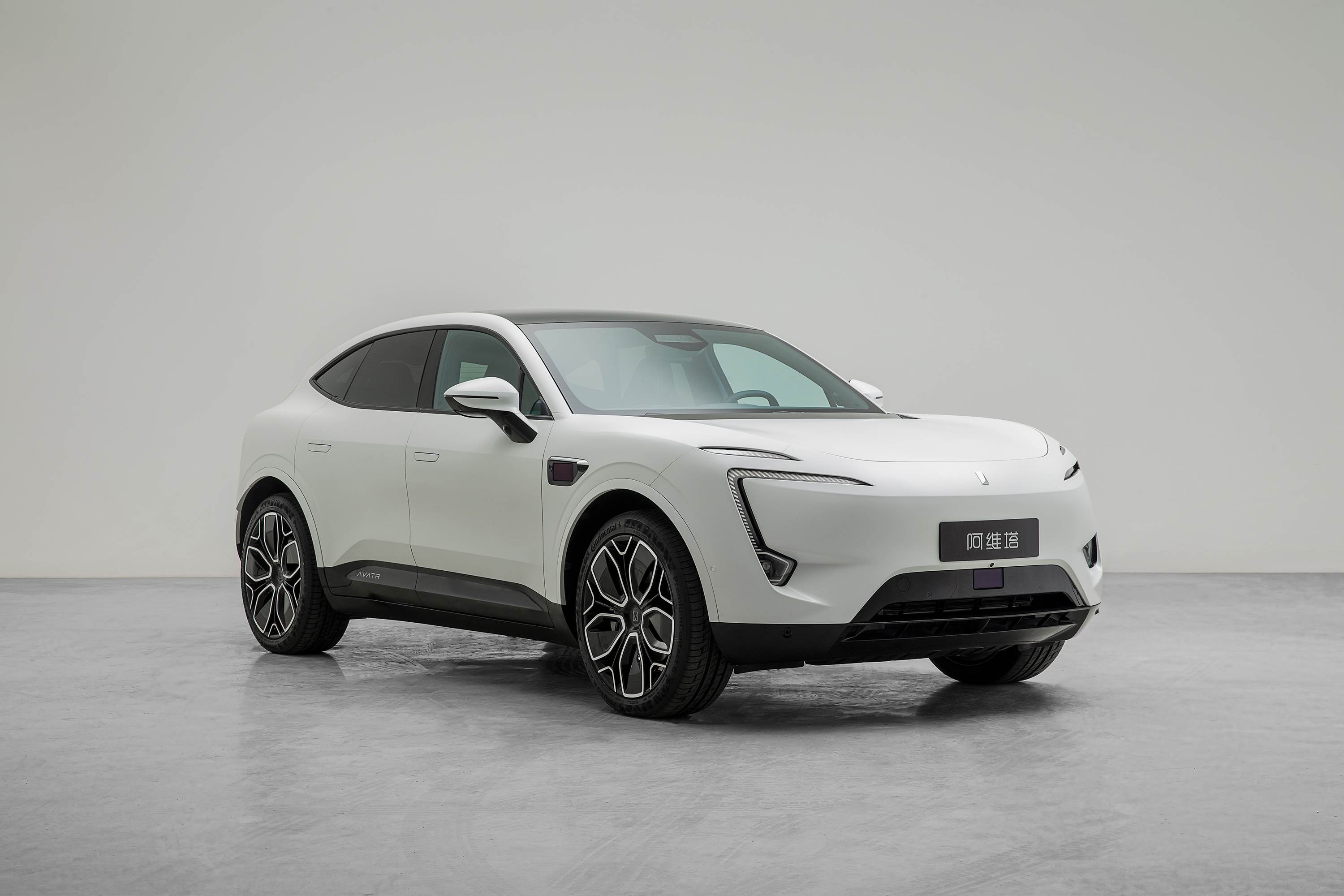
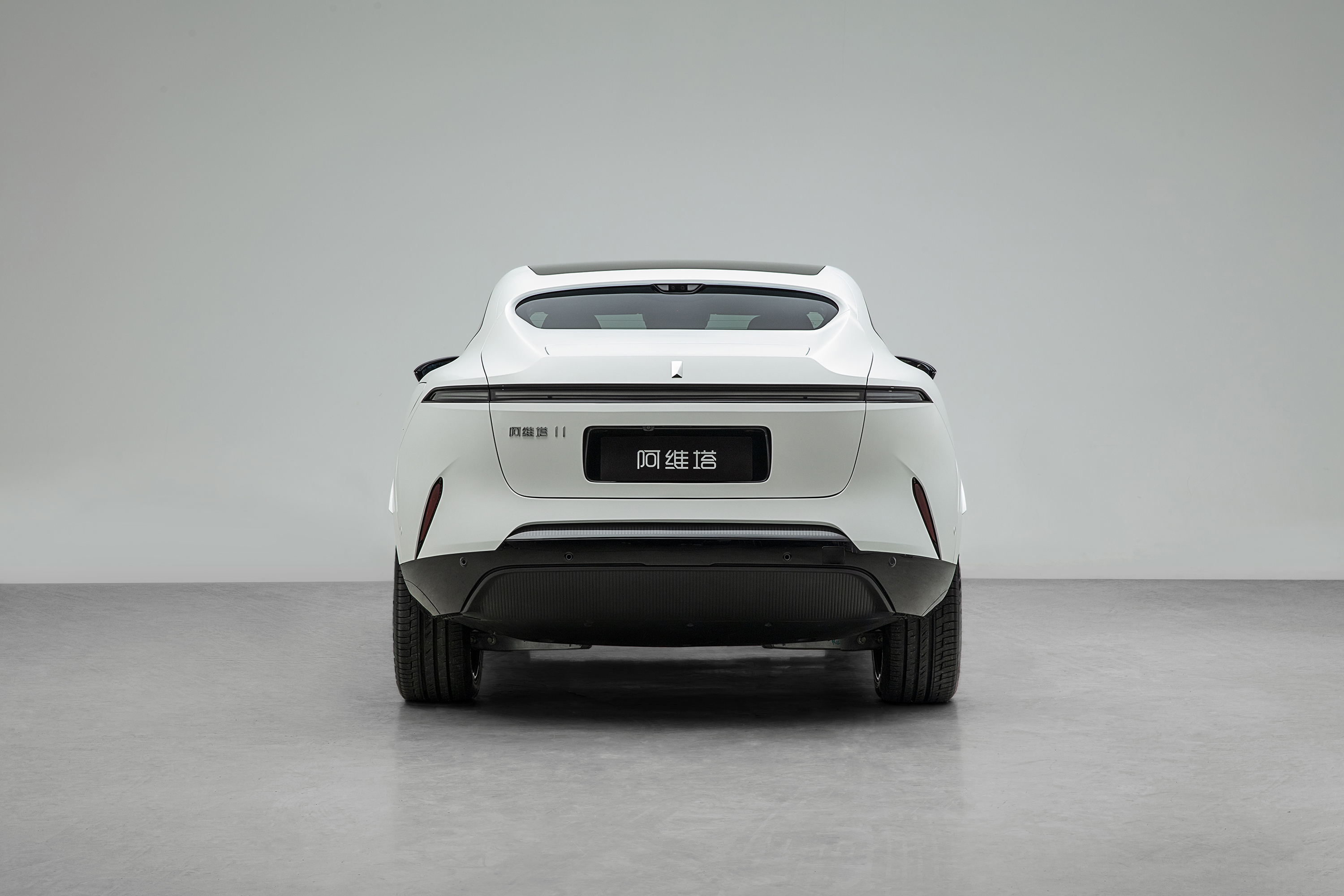
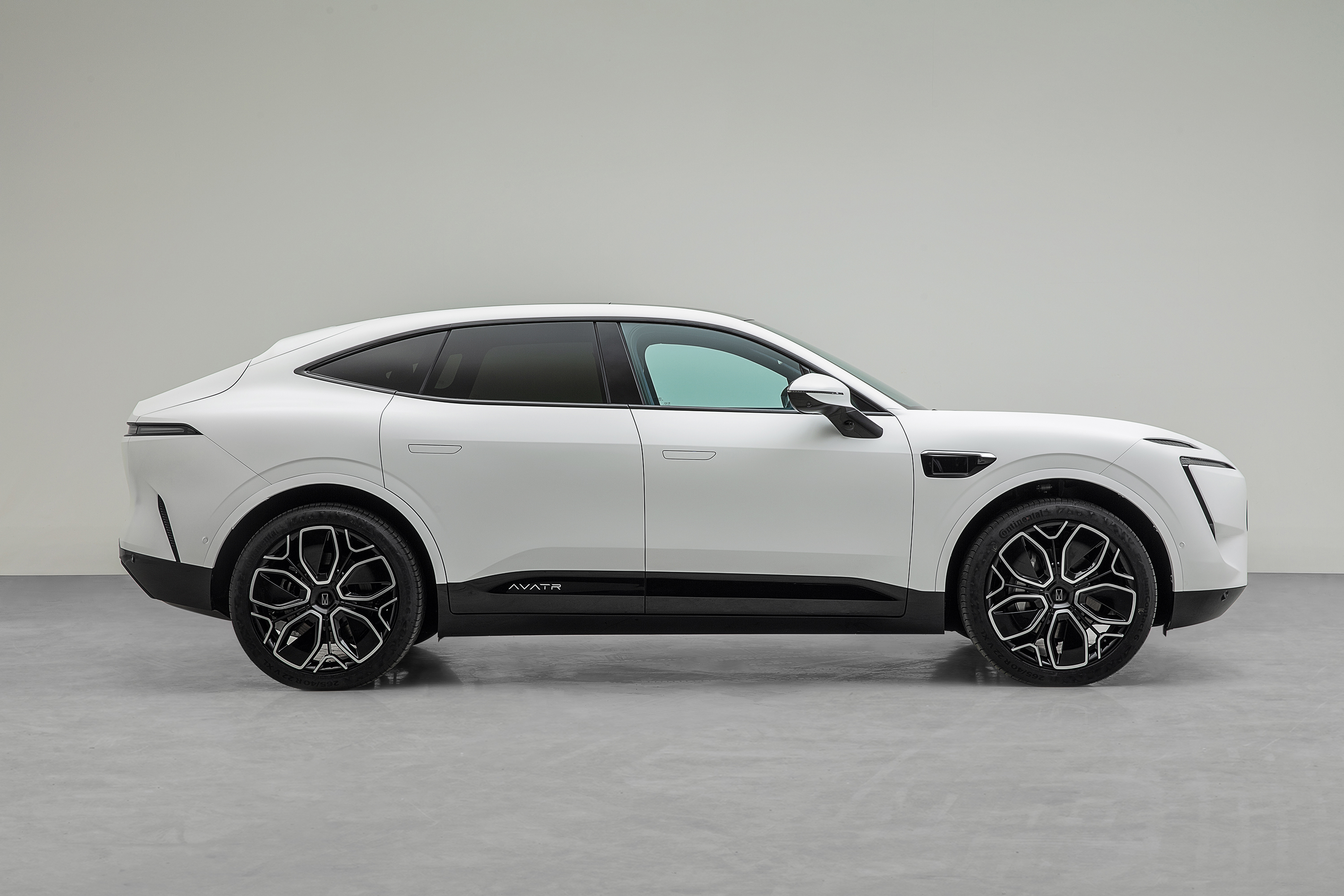
In addition to the information disclosed in the MIIT, Aveta has also released many important details:
- Equipped with CATL’s ternary lithium battery pack
- Battery capacity of 90.38 kWh (range up to 600 km)
- Energy density of battery pack: 180 Wh/kg
- Equipped with a 750 V high-voltage platform
- Maximum charging power of 240 kW
The Aveta 11 is positioned as the flagship product of Aveta. Judging from its exterior dimensions, the Aveta 11 is a mid-size SUV (although its wheelbase makes it already a mid-to-large SUV), and its appearance is almost unchanged from the concept car shown at the previous press conference, with a slightly flattened overall shape.
In terms of power, it will be equipped with Huawei’s new generation of dual motors, with 195 kW at the front and 230 kW at the rear, for a maximum power of 425 kW. The weight distribution at the front and rear is 50:50, and it can accelerate from 0-100 km/h in 3 seconds.
According to the parameters, it is positioned at the top level of this size, and one noteworthy feature is that the Aveta is equipped with Huawei’s latest motors.
In terms of power batteries, the entry-level version of the Aveta 11 will use a 90.38 kWh CATL battery with an energy density of 180 Wh/kg. It is said that the Aveta may also use larger-capacity batteries in the future, with an expected range of over 700 km. We speculate that the 700 km version will have a battery pack with over 100 kWh capacity.In addition, the AVTR 11 also adopts a 750 V high-voltage platform, and the highest charging power can reach 240 kW. Here are two references: one is that Tesla’s current V3 supercharger has a maximum charging power of 250 kW, and the other is that it can complete 30%-80% of energy replenishment in 15 minutes (which is 300 km in 15 minutes).
This charging data is currently a remarkable achievement, but what we are more concerned about is where there are such high-power charging stations.
Tesla’s V3 can achieve a charging power of 250 kW, but all charging stations are self-built by Tesla. Currently, the maximum current of the third-party charging stations on the market is only 250A, and the maximum power is 120 kW. Therefore, even if the vehicle can accept it, it is useless without such high-power chargers. Here we are waiting for the follow-up news from AVTR.
In terms of assisted driving, due to AVTR’s deep cooperation with Huawei, the full set of ASD automatic assisted driving suite was directly installed, with the following hardware:
- 3 Huawei 96-line LiDARs
- 6 mmWave radars
- 12 ultrasonic radars
- 13 cameras (guessing 4 panoramic views + 9 ADAS)
– Maximum computing power of 400 TOPS (guessing Huawei MDC610 platform)
In terms of capabilities, it will be close to L4, but the regulatory level is still L2.
In the information and pictures released by the Ministry of Industry and Information Technology this time, we also saw more details about the AVTR 11:
- All models are equipped with 21-inch wheels as standard and can be equipped with 22-inch wheels as an option. The 22-inch wheel version comes with Michelin PC6 tires, which may not be cheap from one point of view;
- All models are equipped with frameless doors, and the rear is equipped with privacy glass as standard;
- The pictures released this time show the white version of AVTR 11 for the first time. Compared with the previously announced green version, it is more visually simple and pure. By zooming in on the picture, it can be seen that AVTR 11 will adopt a seat and steering wheel design that leans towards a sporty style;
- From the pictures released by the Ministry of Industry and Information Technology, there is also a version with a smoked black stripe, which is very sporty in style;
- The tail logo of the previously shown vehicle was “AVTR 11”, while the one shown in the picture released by the Ministry of Industry and Information Technology was “AVTR 011”.
AVTR is expected to be officially released at the Beijing Auto Show this year and will face competition from XPeng G9, Ideal L9 and NIO ES7, which will also attend the show. From the currently known information, the horizontal size of AVTR 11 may be closer to NIO ES7, but the height is lower, the wheelbase is longer, and the overall vehicle shape is flatter.In terms of accelerating performance, they are quite similar. As for the hardware for assisted driving, NIO ES7 has an advantage in higher computing power, while the advantage of Equatorian T11 lies in more Lidar and cameras. As one of the representatives of the second batch of China’s automakers, can Equatorian rely on the technological advantages from Huawei, Changan, and CATL to surpass its competitors in product strength? Let’s wait and see at the Beijing Auto Show in April.
This article is a translation by ChatGPT of a Chinese report from 42HOW. If you have any questions about it, please email bd@42how.com.
